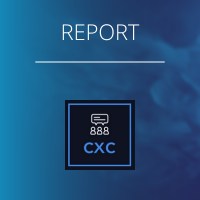The following questions are important for treasurers to ask because they can help to ensure that the company is making the best possible FX decisions and mitigating FX risk. We tackled these questions with expert advice from treasuryXL experts Niki van Zanten, Harry Mills and our esteemed partners:
Harry Mills
treasuryXL / FX Risk Management Expert
Niki van Zanten and Harry Mills who are treasuryXL and seasoned FX experts, share their profound understanding and provide comprehensive responses to each of these inquiries. Furthermore, you will find valuable perspectives and recommendations from our affiliated partners, detailing the ways in which they can offer their assistance.
Niki van Zanten
treasuryXL / Seasoned FX Expert
1. Would my CFO be happy if they could see my FX decisions?
Niki van Zanten answers…
Management information is not the same as the information a treasurer needs to do his job. Make sure to understand the different objectives that different players have as well as how this reflects in reporting. The cherry on the cake is to be able to prove your contribution to overall company goals.
Harry Mills answers…
This question is laced with insinuation. Why wouldn’t the CFO be happy with the Treasurer’s FX decisions? The only way the CFO could be unhappy is if the Treasurer operated outside of the firm’s FX Policy, surely? If the firm lacked a Policy, there could easily be disagreements over the appropriateness of trades and trade timing etc.
This cuts to the heart of what I write about regularly: accountability sharing and the removal of emotional or market-led decision-making! Build a Policy then implement it!
Note: Partner advice is presented in a random order
Working with the CFO should involve innovative embedded FX solutions that surpass traditional methods. FX decisions significantly impact financial health, necessitating support for risk reduction, profit maximization, and global competitiveness…
Read full advice
Utilizing embedded cross-currency solutions like Grain for:
- Enhanced FX management automation that enhances visibility for CFOs and treasurers.
- Comprehensive solution seamlessly integrated into customer-facing and operational back-office processes.
Collaboration with the CFO, proactive FX hedging, and embedded solutions empower treasurers for risk management, performance optimization, and enduring global success.
While financial statements are published at fixed dates, CFOs demand easy-to-use, customised dashboards to obtain instant visibility on all aspects of the firm’s FX hedging…
Read full advice
Other requirements include:- The firm’s exposure under management by value date and type, with clear visibility on all open, managed and hedged pieces of exposure.
- The hedging performance, with traceability to view the spot FX rate at the time of the entry and at the time of execution
- The impact of forward points
- The source of the biggest P/L impact
Ebury prides itself not just on providing a service, but on forming strategic partnerships with its clients. This approach positions us ideally to evaluate and design the best-suited foreign exchange strategy specific to each organisation’s unique profile, goals, and risk tolerance…
Read full advice
With Ebury as a valued partner, the treasurer has more than a service provider; they have a dedicated ally committed to enabling optimal decisions concerning foreign exchange exposures. We go beyond traditional FX solutions. We incorporate innovative technology and expertise to ensure the best financial solutions suitable for any business size and industry.
2. Do we have visibility into where FX fluctuations impact our business?
Niki van Zanten answers…
The first step is identifying exposure, followed by categorising according to behaviour of underlying and how they impact financial targets. The second step is crucial as this unveils the actual impact on the business. Also many would like to believe it’s a science but it’s just as much an art.
Harry Mills answers…
The activity of identifying sources of currency exposure is critical – some are more or less obvious than others so, be thorough when investigating and be sure to include stakeholders from all areas of the business.
Once identified, the impact of the currency movements needs to be analysed. Again, some will be obvious, such as the impact of a stronger home currency on foreign currency sales (revenue erosion), whereas others may be more nuanced. At this stage, I find it helpful to run a ‘what if’ qualitative discussion with relevant stakeholders – how would we react? how would this impact our competitors? can we shift supply? can we change prices? etc.
Note: Partner advice is presented in a random order
Through comprehensive FX exposure analysis, data analytics, and collaboration with key stakeholders, we can gain valuable insights into how currency fluctuations affect various aspects of the business…
Read full advice
Grain’s free exposure analysis tool offers a user-friendly dashboard for a holistic view of transaction currency exposure. This platform enables tracking volatility changes over time, refining risk management, and making confident data-driven financial decisions.
Finance teams need dashboards allowing them to understand, for example, the economic impact of a 10% devaluation of a given currency, or whether a loss is coming from an order that was not booked in time in the ERP. Another key topic relates to liquidity management…
Read full advice
Surveys are almost unanimous in showing the priority of liquidity management. That’s why it is important to have, when it comes to currency management, full, real-time visibility on marked-to-market positions and forthcoming settlements per bank, per day, per currency pair.
Currency volatility, being an inherent and continuous risk posed by the globally interconnected economy, can significantly swing your financial results especially if your company engages in international trade. Rapid fluctuations witnessed often in the world’s most liquid and heavily traded FX market can substantially affect your company’s bottom line…
Read full advice
Ebury’s unique value proposition is rooted in providing clearer and easier visibility into FX volatility’s potential impacts on your business’s profitability and financial health. We do not merely facilitate FX transactions, but we go several steps further to ensure that our clients have a profound understanding and control of their international financial exposure.
3. Do we know how banks earn on FX?
Niki van Zanten answers…
Look for banking partners willing to have an open discussion on what goes on behind the scenes and understand and respect their business model, a one-way approach to trying to slash pricing often doesn’t play out well. On top of that, speak to experts on gaining an understanding of the FX, even if it means adjusting your goals.
Harry Mills answers…
You should have an idea of how your banks/brokers prices your business. Sometimes, FX is provided in conjunction with other products, such as lending or trade finance, so having a holistic view is important.
Note: Partner advice is presented in a random order
Banks typically earn substantial fees through spreads, commissions, overnight swaps, and trading activities. But, modern embedded FX solutions powered by Machine Learning allow businesses to substantially lower costs and avoid unnecessary conversions at banks…
Read full advice
With Grain’s embedded FX solution, businesses can:
- Lower hedging costs and avoid spreads to secure better exchange rates
- Eliminate Commissions and Wire Fees: Directly manage cross-border transactions to avoid bank charges.
By leveraging such cross-currency solutions, businesses optimize FX processes, reduce fees, and enhance international competitiveness.
Some treasurers and CFOs display excessive concern about FX trading costs. The advent of Multi-Dealer Trading platforms like 360T has, to a large extent, taken care of this problem…
Read full advice
The idea is to reduce trading costs as much as possible, using features such as best-price-execution to put banks in competition with one another. That’s OK. However, we tend to tell treasurers to pay more attention to a proper integration between the different phases of the FX workflow, rather than zeroing in on reducing FX trading costs alone.
Working with multiple liquidity providers, we have created an ecosystem of global partnerships that empowers us and, in turn, our clients, reinforcing the value of economies of scale. As a result, we are consistently able to secure more attractive trading rates, directly benefiting our client’s bottom line…
Read full advice
We operate on a volume-driven approach, relying on narrow margins. This means that we are geared toward delivering highly competitive rates to our clients. With Ebury, clients find a company who understands their need for efficiency, transparency, and ultimately, profitability in their FX transactions.
Conclusion
By asking these three key questions, treasurers can gain a deeper understanding of FX and make better decisions that protect their company’s bottom line. By understanding how FX fluctuations impact their business, where FX risk is greatest, and how banks earn on FX, treasurers can take steps to mitigate risk and maximize profits.
If you need extra information or help, please get in touch with our partners. They are here to help you make the best possible FX decisions for your company.

















